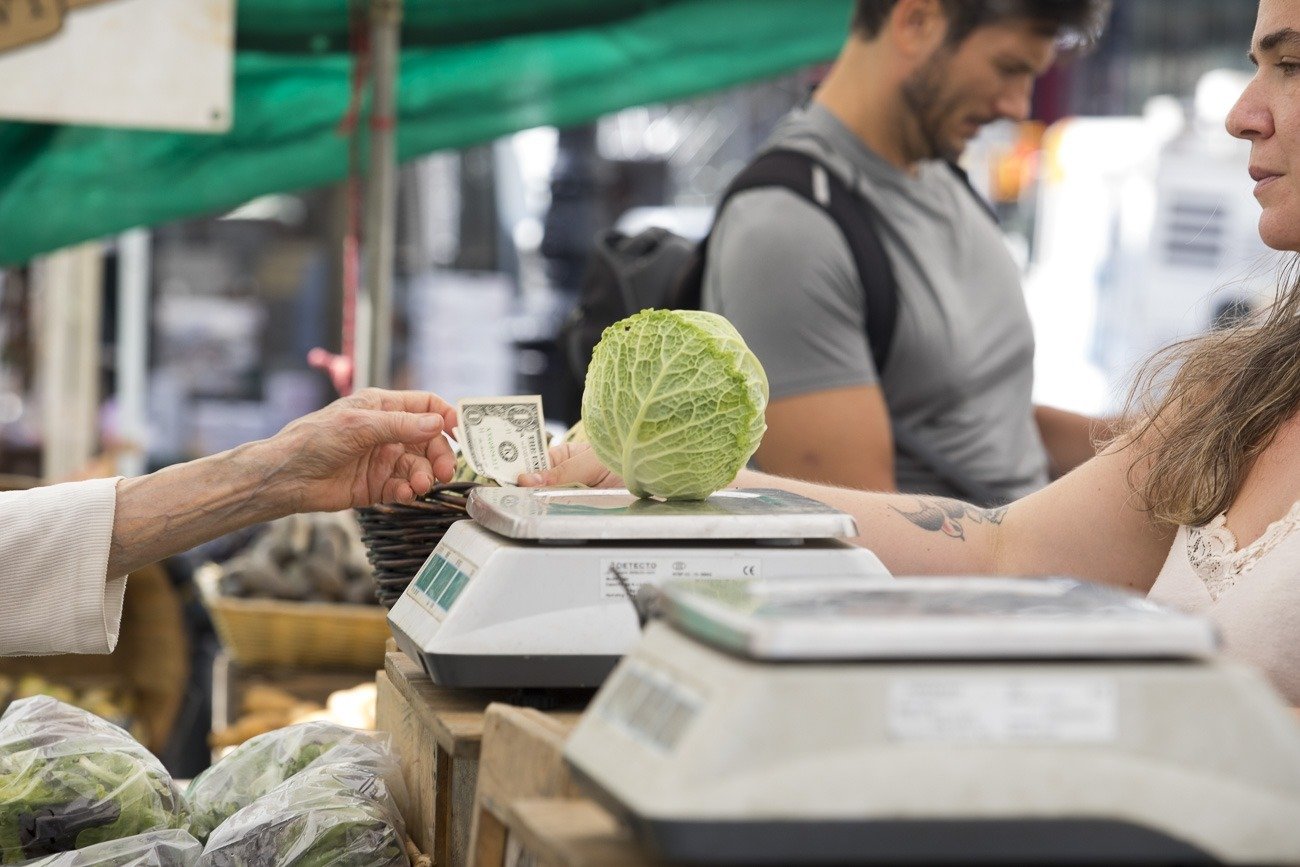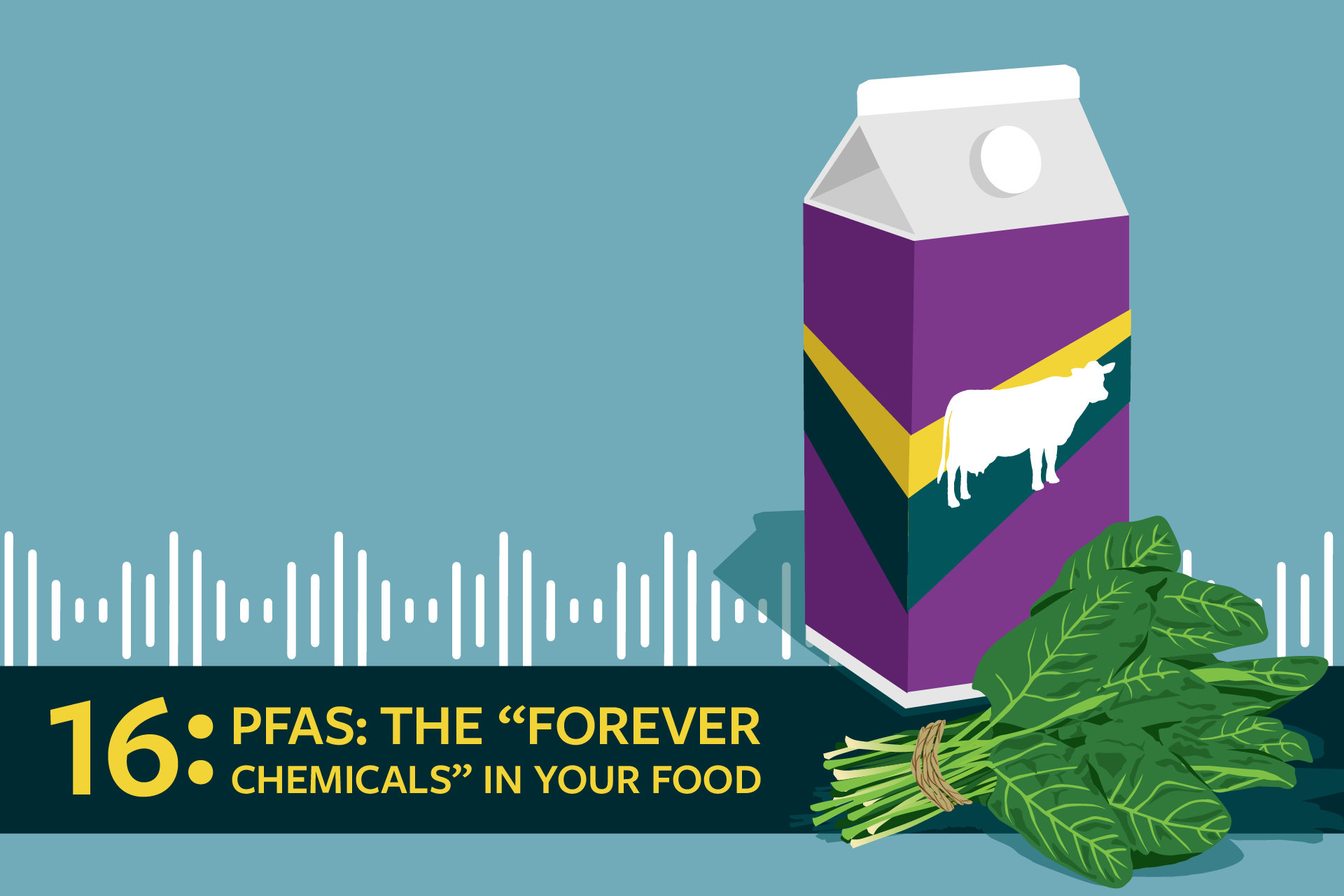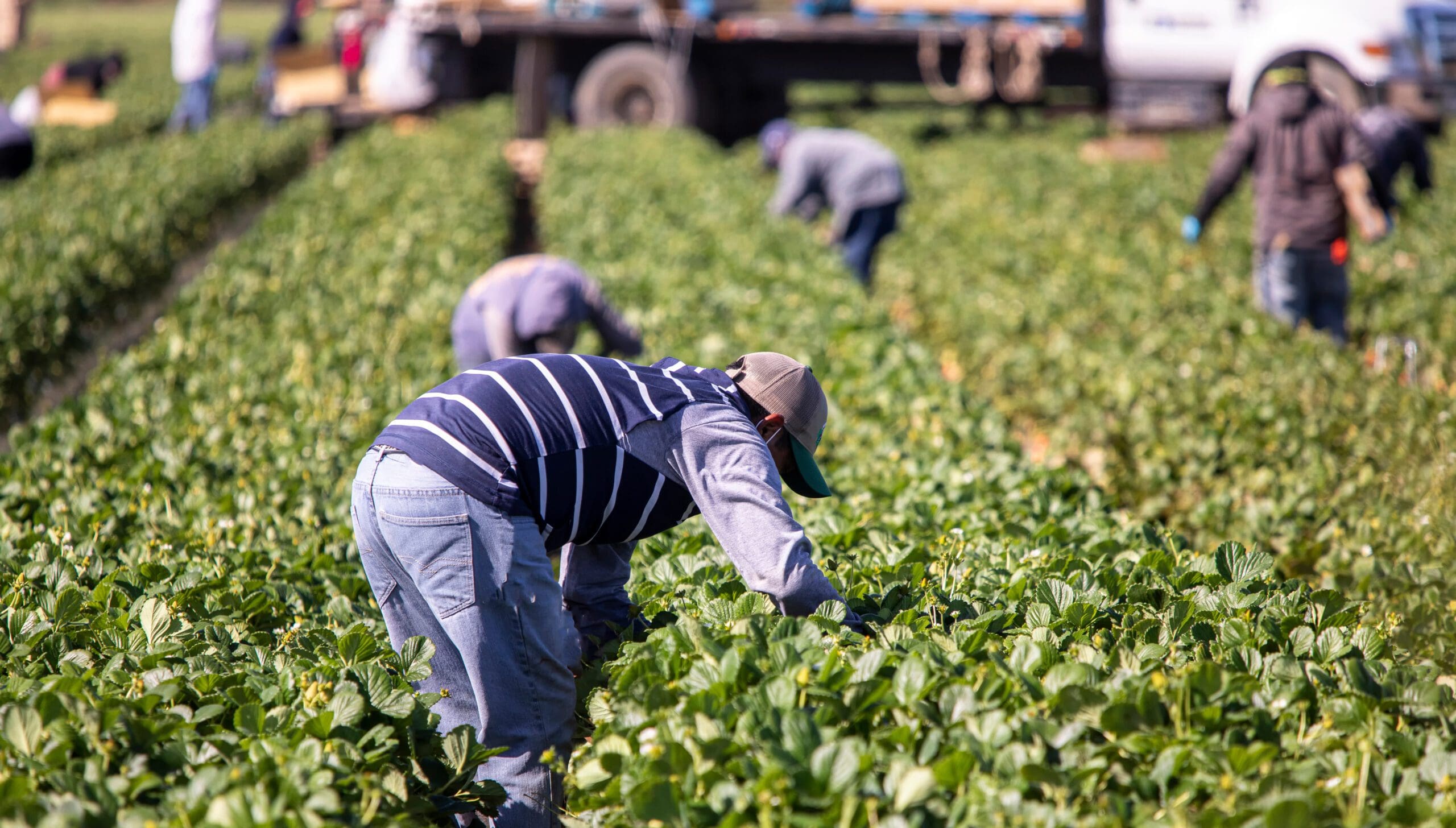Looking ahead: Our 8 predictions for the top food and agriculture stories in 2024
You could be forgiven for coming out of 2023 with a less-than-hopeful worldview. Covid isn’t gone; neither is bird flu. Grocery prices may or may not be stabilizing, but either way, many in the U.S. are still feeling the pinch. Torrential floods and devastating fires shook communities and food producers around the country as we continued to smash through climate change records and warning signs. At time of writing, major wars are causing widespread devastation on at least three continents — including by threatening food security for millions.
Amid all of this, though, 2023 did see some decisive action to protect people and the planet. UN members signed a High Seas Treaty to protect marine biodiversity and several states signed universal school meals into law. The Supreme Court upheld California’s Proposition 12, a major win for animal welfare. And 2024 presents more opportunities and turning points, including a presidential election and a return to farm bill negotiations. It will be a year of political battles and big decisions, during which we’ll need to think seriously about the role of technology, the responsibilities of our government, which commitments we need to go all in on — and which approaches we should leave behind.
1. AI will make more decisions about what we eat.
Many industries are embracing artificial intelligence, and some of its most eager adopters are working in food and agriculture. Proponents say the technology could maximize efficiency and help solve big problems, but as with most tools in the hands of big business, AI’s appeal has a lot more to do with the bottom line.
The story so far
Machine learning has already made some processes — like identifying potentially useful compounds for food scientists — a lot faster, and that’s already led to claims that AI can help create foods that are tastier or slower to spoil. Others see potential in using AI to help people plan and stick to healthier diets. On a larger scale, the technology could be deployed to reshape the food system itself by identifying inefficiencies in supply chains. News outlets have been quick to play up the idea that AI could help provide healthier, more sustainable food at a lower cost.
Looking ahead
What’s missing from much of the fawning coverage is who controls the technology and stands to benefit from it. By incorporating AI into their pursuit of profit, food companies could aggravate existing food systems problems in the process. For example, if AI plotted out routes and contracts for a “maximally efficient” supply chain, it might double down on the corner cutting we’ve already seen from highly consolidated grocery chains like Walmart, which has bulldozed local economies. Ultraprocessed foods, already designed for maximum palatability and profitability, might get a veneer of healthiness from new “nutritious” ingredients — marketing that could steer consumers ever further from the whole-food-based diets we know are healthiest. Given the public’s uneasy embrace of AI so far, it’s unlikely that we’ll see food companies advertising its growing role in their business decisions. But 2024 will certainly see more products and processes reshaped by its influence.
2. The battle to regulate agricultural water use will intensify.
2023 started on an unusually wet note for the water-stressed agricultural regions in the Western U.S., which helped alleviate some pressure on farmers. But one good year isn’t enough to reverse the region’s extended drought, which scientists warn is here to stay. Adapting to a drier climate requires changing the way that both surface water and groundwater are allocated — and that process has been fraught with difficulties as negotiators work to adapt arcane water rights rules to the 21st century.
The story so far
Along the Colorado River Basin, arguments between California (the largest water user by far) and other states (namely Arizona and Colorado) to coordinate reduced river water use have stalled at multiple points, with the current plan barely passing federal muster. But it isn’t just surface water that’s under stress: As the climate warms and dries, farmers are also over-extracting groundwater. This is especially troubling in areas like the Midwest, where farmers are increasingly dependent on groundwater for irrigating crops that used to get by with just rain. Because groundwater is subject to almost no federal oversight, but rather to often-weak local regulations, environmentalists warn that increasing rates of extraction could leave even historically wet parts of the country with serious water shortages.
Looking ahead
We predict that 2024 will force more of these difficult conversations about water use. Unless another unusually wet year leaves ample surface water in the West, those water districts may finally have to set limits on well drilling and groundwater extraction. Fights between states over who gets to draw river water will grow more contentious, with increasingly dry conditions forcing them back to the negotiating table. The federal government has threatened to step in if they can’t reach an agreement, which could result in a drastically redrawn water rights map. Still, we’ve heard this before — and no such steps were taken the last time negotiations fell through.
3. Consolidation in the food industry will march forward, but not without resistance.
At the start of the Biden presidency, the administration made a lot of noise about finally enforcing antitrust regulation to stop big mergers and bring competition back to several markets — including big meat. But between failed legal battles and notable mergers across the food industry, the government’s ability to make markets fairer is being tested.
The story so far
In 2023, some moves to prosecute companies for manipulating markets — like an attempt to prove that chicken industry executives had conspired to set high prices from 2012 onward — ended in losses, with an often-unrealistic level of evidence required to demonstrate intent. Outside the courtroom, the administration has been trying to change rules where it can to prevent big companies from exploiting both farmers and consumers, like 2022’s new regulations to help poultry farmers get fairer contracts or 2023’s rule updates from the Federal Trade Commision on mergers, which would force more consideration of how proposed deals impact workers and customers.
Looking ahead
Some big mergers are moving forward anyway. Executives at Kroger and Albertsons say they’re confident the merger between their companies — which would create a 4,500 store mega-chain — will clear the new rules and go through in 2024. Even if the FTC does sue to block the merger, it’s unclear whether the effort would succeed in court. But with some key legislators signaling their opposition, political interest in aggressive antitrust action seems likely to build in 2024.
4. Public outcry over PFAS contamination will grow.
PFAS, the non-decomposing “forever chemicals” that lend nonstick, greaseproof, waterproof qualities to materials, have become ubiquitous environmental contaminants since their introduction to consumer products in the 1940s — and have been found to cause numerous health problems. Alarm has mounted over their presence in the food system after the discovery of PFAS in soil, water, crops and milk on a number of Maine farms, with similar contamination slowly being revealed around the country.
The story so far
Activists made significant progress in the fight against PFAS in 2023: Several states implemented partial PFAS bans, eliminating them from food packaging, clothing and some other products produced in-state. Still, none have met the high standard set by Maine, which this year began a complete phaseout of intentionally added PFAS, applied to all products manufactured in the state despite opposition from various chemical and waste industry groups. Manufacturers are also feeling the heat from a growing number of lawsuits demanding they pay for the damage caused by the chemicals; 2023 saw record-breaking settlements from 3M, DuPont and others, totaling more than $11 billion paid to municipalities with contaminated water systems.
Looking ahead
With many municipalities reporting payments are inadequate to fully mitigate contamination, 2024 will likely see more manufacturer payouts. But municipal water suits aren’t the only front in the fight on PFAS: Legal analysts say these first settlements could open the floodgates for personal injury lawsuits, much like those against chemical giant Bayer for its carcinogenic herbicide, Roundup, which could leave manufacturers on the hook for enough money that they consider ending PFAS production entirely. Lawmakers from Maine and other impacted states are also trying to tackle PFAS at a federal level: Legislation to help fund agricultural remediation is up for discussion as part of the next farm bill.
5. The year of the strike will continue.
The media’s end-of-2023 coverage has called it a “breakthrough year” for the labor movement, a “revival of union power,” a time of “big strikes, bigger gains” and even, simply, the “Year of the Strike.” But food chain workers — especially farmworkers, historically victims of so-called agricultural exceptionalism — generally haven’t seen the same progress that their peers in some other industries have. Still, the momentum is undeniable.
The story so far
2023 was a landmark year for labor in the U.S. by all accounts, with half a million workers striking and popular support for unions the highest it’s been in half a century. There were major actions and victories for auto workers, publishing workers, academic workers and actors and writers for film and television. UPS drivers negotiated a historic contract without even heading to the picket line. Labor saw piecemeal wins in the food sector, including a higher minimum wage for California fast-food workers and better compensation and benefits for hospitality workers in Las Vegas. Starbucks workers continued to organize, as did Trader Joe’s employees, despite some allegedly aggressive corporate tactics. But food and agriculture workers — who are largely ununionized — are struggling to achieve basic protections like mandatory shade, water and rest during periods of extreme heat.
Looking ahead
According to data from Cornell University’s Labor Action Tracker, the number of striking workers was nearly 10 times higher in 2023 than just two years before. And there’s a general consensus that this energy won’t be flagging anytime soon: As labor historian Jason Resnikoff told CNBC, “nothing succeeds like success.” We predict that, for food chain workers, successes will continue to come — but more in dribs and drabs than a rolling wave. Some things to look out for: Eyes are on the United Food and Commercial Workers, where an internal reform movement is brewing. Advocates are still pushing for more labor protections in the now-delayed farm bill. And some predict a stronger hand from the National Labor Relations Board in the coming year.
6. The food tech startup will lose its luster as a vehicle for change (and profit).
For several years, headlines have celebrated startups that aspire to change the way we eat with new products that cut carbon footprints, have better nutritional profiles, avoid inhumane animal treatment or solve other problems with our food system. But with an economy in flux, some are struggling to hold on, dulling their promise of revolution.
The story so far
2022 already saw one category, fake meat companies, start to falter as fading hype and a resultant decline in sales hit businesses hard. 2023 has only continued that trend, with indoor agriculture and aquaculture companies weathering big losses, announcing reshuffles or closing entirely. Their problem? Tech is expensive, and the bloated executive salaries that come with startup culture are, too — so startups really need an edge on the competition if they’re going to be truly disruptive. Within industries like vertically grown greens, new companies overpromised on that edge (sometimes without understanding the basics of the markets they were trying to disrupt), and are failing to be profitable now that the investment money that enabled them to expand so dramatically has largely dried up.
Looking ahead
In 2024, we don’t expect many of these industries to die outright: Many are, after all, ideas that are worth pursuing. But as the runaway enthusiasm (and funding) for food tech eventually stabilizes, we expect that many companies will settle into niche markets rather than disrupting their industries as a whole. With a still-unresolved farm bill and a new Congress on the horizon, perhaps growing disillusionment with startup culture will be a wakeup call to increase public investment in sustainable agriculture and food tech.
7. The battle for the soul of regenerative agriculture will rage on.
Adopting truly regenerative practices — producing food in a way that works with and nurtures the surrounding ecosystem, with a focus on soil and the potential for carbon capture — could be a major step forward in reaching our climate change mitigation goals. But the regenerative movement is already in danger of dilution by ill-defined standards and corporate greenwashing.
The story so far
Long the domain of agroecologists and small, sustainable farmers and ranchers, “regenerative agriculture” is now being discussed in the halls of power. The topic was part of the agenda at COP28, and companies like Walmart, Hormel and General Mills have made public commitments in recent years and even begun using the regenerative label on certain products. Sounds good, but it’s unclear if any of these moves will meaningfully contribute to slowing climate change.
Looking ahead
Despite the emergence of a few rigorous “regenerative” certifications, such as Regenerative Organic Certification or Certified Regenerative by AGW, the term remains unregulated and unenforced. There’s certainly some room to celebrate its entry into the mainstream: Elements of regenerative agriculture, even in watered down form, represent a step forward from the industrial status quo. But with massive corporate greenwashing also the norm, formalized definitions and procedures for accountability are necessary to ensure these changes amount to more than a mere branding exercise. California is poised to begin formalizing the definition on a state level this summer or fall when they begin a public engagement process (but buckle up for controversy around the proposed definition).
8. Climate-change cuisine will be mainstream.
Discussions about the environment and the food system aren’t just happening at the corporate level. In the U.S. the thinking about climate change — both how to fight it and how to adjust to its new realities — seems to finally be solidifying among chefs, bartenders, cookbook authors and others who shape the way we eat, at restaurants and at home.
The story so far
We’ve already seen this growing climate-change consciousness manifest in various ways. In the past year, new research sparked discussion about climate-related labels on restaurant menus and other food-service settings. Movements well-established in dining — slow food, local sourcing — continued to blossom in the drinks business, with books like October’s “Slow Drinks” and new sustainability-focused bars like Philadelphia’s Post Haste and Good Company in Boston. Grist reported on what it called “a whisper of a subgenre beginning to emerge” in the form of climate cookbooks; we clocked releases that tackled sustainability through the lenses of community, nature, faith, food waste and more.
Looking ahead
2024 will see yet more general-audience books that consider the intersection of food and climate change: “Good Food, Healthy Planet,” by Canadian food and climate writer Puneeta Chhitwal-Varma; sociologist Nina Guilbeault’s “The Good Eater: A Vegan’s Search for the Future of Food”; cookbooks focused on vegan recipes from China, India and around the world. The hospitality industry will also keep the conversation going. When asked about his forecast for 2024 by the UK publication Country & Town House, chef Jeremy Lee predicted that more restaurants would begin rotating their menus daily in response to climate change — throwing what we think of as “seasonal eating” into flux.
Get the latest food news, from FoodPrint.
By subscribing to communications from FoodPrint, you are agreeing to receive emails from us. We promise not to email you too often or sell your information.
Top photo by Gorodenkoff/Adobe Stock.
More Reading
Are plastic bag bans working?
November 11, 2024
Julie Guthman explains why Silicon Valley will not hack the future of food
November 4, 2024
Greenhouse gases in the food system, explained
October 11, 2024
Vandana Shiva is still mad
October 2, 2024
How can we cut food waste in half by 2030?
September 5, 2024
Can sushi be sustainable?
August 26, 2024
Agroforestry’s role in wildlife conservation and food security
August 12, 2024
Cooking oils and sustainability
July 26, 2024
How can ecofeminism help us envision the future of food?
July 18, 2024
Switching from beef to chicken isn't the sustainability flex you think it is
June 12, 2024




